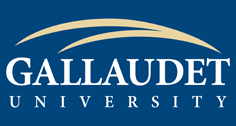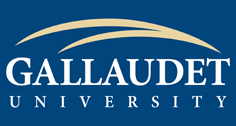[ad_1]

There is new research coming out every day in this field. Now, with CREST, we have the opportunity to bring together top researchers and resources from across the world to advance sign language technologies.
WASHINGTON (PRWEB)
September 08, 2020
Gallaudet University announced today that it has launched a worldwide professional network to promote deaf-led research and innovation for the advancement of emerging technologies with sign language. The establishment of this new collaborative network, Cultivating Research and Equity in Sign-related Technology (CREST), is funded by the National Science Foundation. CREST will focus on increasing the inclusion of deaf and hard of hearing students and researchers in the field.
“Gallaudet is honored to host this new global network,” said Lorna Quandt and Melissa Malzkuhn, founders of CREST. Quandt is Science Director and Malzkuhn is the Founder and Creative Director of the Motion Light Lab at Gallaudet University. “There is new research coming out every day in this field. Now, with CREST, we have the opportunity to bring together top researchers and resources from across the world, not only to accelerate cutting-edge technologies for the broader deaf community but most importantly to ensure they are developed authentically from the start with deaf input and representation.“
A key goal of CREST is to increase the inclusion of deaf and hard of hearing individuals in the development of sign-related technologies to bring added benefits to those who use sign languages as a primary form of communication. CREST also will serve as a collaborative home for innovators throughout the world who are working to advance all forms of sign language technologies that can benefit the deaf, hard of hearing and deafblind communities.
Activities of the CREST network will have two primary benefits: (1) increasing inclusion and opportunities for deaf individuals, and (2) providing hearing researchers with connections to the deaf and hard of hearing community throughout the development of their research projects.
CREST is housed within the Center for Visual Language and Visual Learning (VL2) at Gallaudet University. VL2 is a leading international research center with a mission of understanding the behavioral and brain mechanisms of visual learning. To date, CREST has established a core team of Gallaudet students and faculty, formed a steering committee, and plans to host a two-day global workshop in 2021 for both researchers and students. More than 30 individuals have joined CREST to date. For more information please visit CREST.
Signing Avatars, Gesture Recognition and Augmented Reality
Sign language technologies include tools developed for sign language translation, sign language teaching, or sign language communication in virtual and augmented reality. The tools involve emerging technologies such as signing avatars, gesture recognition, machine learning and computer vision, and wearable sensors.
Unifying and Validating the Field Through Global Collaboration
Quandt and Malzkuhn noted that there is substantial research taking place in multiple countries around the world in the field of sign language technology among academia, startups, and the private sector. “CREST will provide a significant opportunity to both unify and further validate our field through increased worldwide collaboration,” they said, noting work being done in Brazil, China, France, India, Iran and New Zealand.
According to Ethnologue, there are at least 125 different sign languages throughout the world.
Creating Opportunities for Deaf Talent
CREST was also established to foster the development of deaf and hard of hearing students around the world who wish to pursue a career in the field of sign-related technology. The new network will support internships and mentorships, and help identify employment opportunities for students.
“Many technologies today designed to benefit the deaf community are developed by people who are not deaf and do not use sign language as their primary form of communication,” said Quandt and Malzkuhn. “It is critically important that we help bring young deaf talent into this field in a meaningful way and help foster the next generation of deaf researchers.”
This material is based upon work supported by the National Science Foundation under Grant No. 2012924. Any opinions, findings, and conclusions or recommendations expressed in this material are those of the author(s) and do not necessarily reflect the views of the National Science Foundation.
Gallaudet University, federally chartered in 1864, is a bilingual, diverse, multicultural institution of higher education that ensures the intellectual and professional advancement of deaf, hard of hearing and deafblind individuals through American Sign Language and English. The university enrolls over 1,300 students in more than 40 undergraduate majors, as well as many graduate programs at the master’s and doctoral level. It also conducts much research in a variety of fields, including brain imaging, educational neuroscience, education, linguistics, psychology, Deaf history and culture, and Black Deaf history and culture.
Media Contacts
The Durkin Agency
Alana Cowan
alanacowan5@gmail.com
Gallaudet University
Robert Weinstock
robert.weinstock@gallaudet.edu
Share article on social media or email:
[ad_2]

